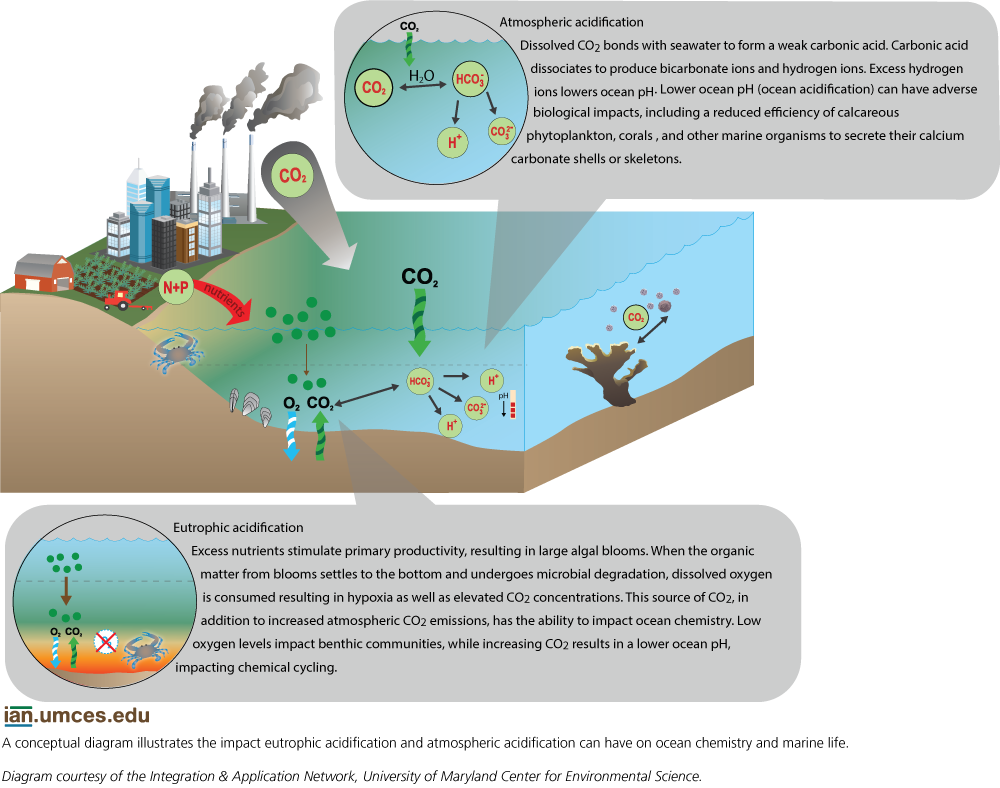WATER CONDITIONS
This year, the team is focusing on salinity and how salt levels in larval tanks might influence oyster development later on in their life cycle. Next summer, the researchers will focus on pH, a measurement of the water's acidity.
Changes in the water's pH or salinity over the course of an oyster's life can cause stress in oysters, and stressful conditions can diminish oyster health and slow their growth. The researchers track these water quality metrics across the entire lifespan of oysters in this study.
Small shifts in water conditions aren't easily noticed by humans, but even tiny changes in salinity or pH can impact oyster growth. Water conditions can also change day-to-day, and larger changes can occur from season to season or year to year.
Even though this year’s experiment focuses on water salinity, all water conditions are carefully monitored throughout each phase of the experiment. To make sure the research team has a precise measurement of the water's pH, one researcher completes a detailed pH test to confirm the initial measurement taken from the tanks where the oyster larvae are raised.
STRESS AND WATER CONDITIONS
“I’m interested in how the different salinities might cause oysters to have a different stress response," Schatz says. “In general, when they’re stressed, they’ll consume more oxygen, which produces these toxic oxygen molecules that can cause cell damage.”
Other aspects of water quality can affect the oysters, too: Water that's too acidic can hinder shell formation. High temperatures can cause oysters to mature faster. For these reasons, researchers keep close tabs on salinity, pH, and temperature.
Keeping water conditions consistent might not necessarily be better than transferring oysters to a location with better water quality. The researchers are working toward a detailed understanding of how water conditions affect oyster growth.
One of the aspects measured in this project is water chemistry. Global climate change is causing coastal waters to acidify, including those of the Chesapeake Bay system, Rivest says. Any other stressors that oysters encounter in the future will only add to the stress of acidification. Although this year's experiment focuses on effects of salinity on oysters, by measuring water chemistry too, the researchers will have a clearer picture of oysters' long-term response to changes in their environment.
After the oysters grow to be about the size of aspirin tablets, the researchers will relocate them out in mesh bags in river conditions similar to the places oysters are grown commercially.
Some oysters will be exposed to salinity levels in the York River that are higher than they experienced in the hatchery, and others will be put in lower salinity water of the Rappahannock River. Comparing the growth and health of these different oyster groups—and their response to a change in salinity—will show whether they experience carryover effects during their adulthood.
